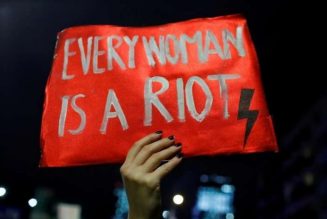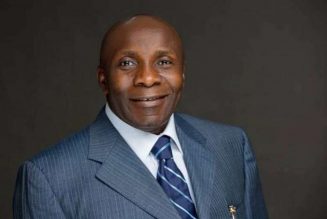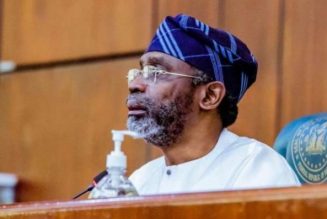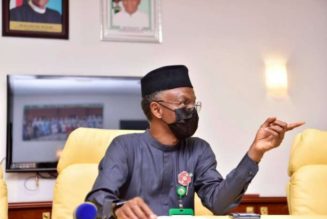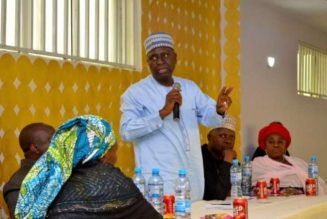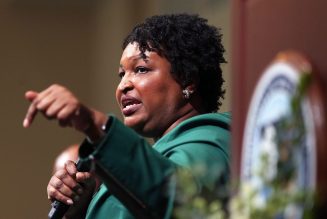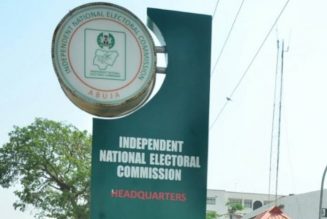By De Elizabeth
On November 8, 2016, Donald Trump’s unexpected presidential victory generated a series of questions for Sydney Greene.
At the time, she was the vice president of the National Association of Black Journalists at Arizona State University, where she spent Election Day covering her classmates’ viewing parties. And while the night started off “electric” with the seeming promise of a historic Hillary Clinton win, by the time Trump was giving his victory speech, Greene felt a numbness take over. “What does this mean for me as a Black person in America?” Greene, now 24, recounts in a phone interview with MTV News. “What does this mean as a woman in America? What does this mean for the communities that I love? And, in the next breath, what does this mean for me as a journalist?”
 Courtesy Sydney Greene
Courtesy Sydney GreeneSydney Greene
From the day Trump announced his candidacy in 2015, his campaign (and later, his presidency), was filled with sexist and racist rhetoric, and he has a long history of attacking and undermining the press. Understandably, Greene wasn’t the only one wondering what Trump’s victory would mean for the future.
Over 2,000 miles away in New York City, Jo Yurcaba had their own concerns. Yurcaba, who currently lives in North Carolina and works as a freelance journalist covering reproductive health and LGBTQ+ rights, was a news editor at Romper during the 2016 election and was stationed at the Javits Center on November 8 — the Clinton campaign’s HQ for the night. “It was a very difficult time for me in general,” recalls Yurcaba, now 28, adding that they came out as nonbinary just before the election. Yurcaba worried, rightfully so, that the Trump administration would make every effort to attack LGBTQ+ rights, which was not only their journalistic beat but also their immediate community. “No one prepares you for the fact that you could be denied health care and then have to write about it the next day,” they point out. “From the get-go, it was really challenging. I now have a whole system for managing my anxiety and depression that I didn’t have before the presidency.”
It became clear early in the Trump era that the role of journalists was no longer what it used to be. The very first weekend of his leadership was infamously marked by former Press Secretary Sean Spicer lying to the American people about the size of Trump’s inauguration crowd; to date, The Washington Post reports that Trump himself has made over 20,000 false or misleading statements. Journalists, whose careers are defined by a commitment to the truth, soon discovered that their job wasn’t just reporting what the president said; rather, it was fact-checking and holding Trump accountable. That particular work, it turned out, was endless.
“There’s been such a reckoning for journalists,” says Zach Schermele, a Columbia University student currently working as a reporter for Montana Television Network. The 19-year-old began his career covering Trump’s presidency for local news stations in Montana and later wrote an education column for Teen Vogue, focusing on how Trump’s policies were affecting the most underserved students. “Our role as reporters is to contextualize and put into perspective what’s going on around us. But because of the world we’re living in, with so many ‘alternative facts,’ it’s more incumbent upon us to say if a person is wrong, or if something is a lie. We’ve had to consider and grapple with that a lot more than journalists were ever trained to do.”
With the rampant spread of misinformation on social media in recent years, accurate and responsible journalism has become all the more pertinent. That task can be daunting, especially when covering a president who not only lies on a regular basis but also puts forth both language and policies that threaten the safety of marginalized communities. It’s a conflict that Remmy Bahati is familiar with. The 27-year-old Columbia University graduate student started her broadcast journalism career in Uganda before moving to the U.S., where she began covering the Trump administration for NBS Television. “It has taken an emotional toll on me,” Bahati admits. “Do you remember when he called African nations ‘shithole countries?’ I’m an African woman. I had to cover that story. That was so heavy for me, as a journalist.”
 Courtesy Remmy Bahati
Courtesy Remmy BahatiRemmy Bahati
Azadeh Ghafari, a California-based psychotherapist known as @the.wellness.therapist on Instagram, says she notices a new sense of urgency in many journalists today. “It’s personal,” she says. “This isn’t something abstract that reporters are just covering; so much of what’s been happening directly impacts our lives, whether it’s climate change, racial and social justice, or LGBTQ+ rights. Journalists understand their role, as physicians do amid COVID-19; they feel the weight and responsibility in the sense of: ‘I have to write about this, and I have to write about it in a particular way in order for it to be effective.’”
For Greene, who now works for a nonprofit dedicated to empowering women in addition to covering politics, gender, and culture as a freelance journalist, that particular call to action means shedding some of her j-school roots and taking matters into her own hands. “We were always taught the importance of objectivity, so there was a lot of ‘both sides’-ing of issues: staying in the middle and just reporting the story,” she explains. “I once had a professor tell me to leave my identity at the door. But as a Black woman, I don’t really have the ability to do that; I am who I am when I walk into a room. After the election, I really started to rethink what my role as a journalist would look like as a Black woman. How can I take these narratives that have been so dominant in our country and culture for so long, and how do I undo them and put forth a narrative that tells the story the right way?”
Emotionally investing oneself in a story can be taxing, too, as Danielle Campoamor has experienced on a regular basis for the past four years. The 33-year-old freelance journalist often covers reproductive justice, advocacy for sexual assault survivors, and maternal mental health — all of which are topics in which she has a deeply personal stake.
“I feel both within and without,” Campoamor says of her role as a reporter. “I liken it to my identity itself. As a white-passing Puerto Rican woman, I sometimes feel like I have no place, and it feels that same way as a reporter who is also a survivor, and someone who has had abortions. To watch this president — who has been accused of sexual assault and harassment by over 20 women — continuously attack abortion rights, I think I’m exactly who needs to be telling these stories. But it sometimes feels like in order to get people to care, we have to keep cutting ourselves open over and over again, sharing these intimate details of our lives in response to what this president has done in order for people to pay attention. After a while, you start to wonder where the work stops and you begin.”
 Courtesy Danielle Campoamor
Courtesy Danielle CampoamorDanielle Campoamor
Work often bleeds into other facets of life, but doubly so when a byline is publicly attached. Journalists are often online targets for harassment from the president’s supporters, or the president himself. “After I wrote a piece about the election, I received dozens of messages [from Trump supporters] saying I should kill myself,” Yurcaba says, noting that they struggled with suicidal ideation in 2016. “I’ve received threatening messages, and ones denying my identity, telling me I’m not nonbinary and that I just have a mental health problem.”
While reporting on the recent Black Lives Matter protests in Washington, D.C., Bahati used her Twitter to share some of her coverage. “Some Trump supporters were harassing me, telling me to go back to Africa, telling me how I don’t have a say about American politics,” she says, adding that she’s been called numerous hateful slurs. “I try to ignore the messages, but it’s so tough. Of course they affect me emotionally.”
It would seem that being a journalist would require one to develop a fairly tough skin, which is the case for Yurcaba, who says they used to spend a great deal of time discussing harassing messages with their therapist. “Now when I get messages like that, I just block them immediately and I don’t read them. I’ve developed the ability to laugh, because some of the messages I get are just so ridiculous.”
Ghafari worries about that sort of desensitization; being constantly threatened is not, and should never be, normal. “Most folks I know in media become numb or adjusted to this,” she explains. “From a mental health perspective, they create a coping mechanism, or they figure out how to deal with the most dangerous threats.” Ghafari points to the Access Hollywood tape or the time Trump mocked a reporter with a disability: “These instances were so shocking at the time, but we’ve gotten used to things like this, because it’s been a nonstop cycle. This says a lot about our own mental health and how easily humans can adapt to difficult situations. In one sense, it shows our resilience. But that doesn’t mean that it doesn’t also strip away at our humanity.”
 Courtesy AAJA JCamp 2019
Courtesy AAJA JCamp 2019Zach Schermele
In 2018, Schermele came face to face with the reality of what a career in journalism means today. While covering an October Trump rally in Missoula, Montana, he watched the president openly celebrate violence against a journalist, much to the crowd’s delight. When a colleague asked him, “Are you sure this is what you want to do with your life?” the 19-year-old felt a wave of uncertainty, one that still echoes two years later.
“It’s really hard for me to reconcile my love for the industry with the rhetoric and the problems that have come out of the Trump era,” Schermele says, admitting that the thought of a possible second term makes him feel completely drained. “Trump’s first term has left a lot of journalists exhausted. Staring down the barrel of another four years…would force a lot of young journalists to really look at the industry, and set new standards for themselves of self-care.”
That’s something Greene is already actively working on. She deletes several of her social media apps each weekend, noting that they can be too triggering — especially amid the coronavirus pandemic and the 2020 election cycle. “I often have to take a step back and explain to myself why I’m doing this work,” Greene says. “And that traces back to what my people and ancestors have been through. The fact that I’m in this position today, with a job and a salary and the ability to speak freely, are things that my ancestors did not have at all. I revisit that every time I get depressed or emotionally tired because of the Trump administration.”
Yurcaba is less certain of their own trajectory. “I’ve talked to people in North Carolina who laugh when I tell them I’m a journalist,” they explain. “Some of them don’t take it seriously. They think I’m part of a greater machine that’s working to ‘trick’ them. I’ve thought about leaving journalism because it sometimes feels like there’s no way to make an impact. I think about that like once a week.”
 Courtesy Johnny Lake
Courtesy Johnny LakeJo Yurcaba
But for many journalists, Yurcaba included, the question of “what else can I do?” often brings them full-circle, to storytelling. Amid the stress and worry, there is also hope — found in the stories of those who are actively working to fight back against injustice or the many young people entering political races themselves with a desire to affect change. That feeling is frequently coupled with despair — but those emotions don’t always cancel one another out; often, they share the same space.
As Bahati explains it: “I have had hard experiences; some have instilled hope in me, and some have made me lose hope. I lose faith in the administration. It’s tough, first as an immigrant; two, as an African woman with an accent; three, as a woman of a different skin color. But what can we do? We have to tell the stories.”


